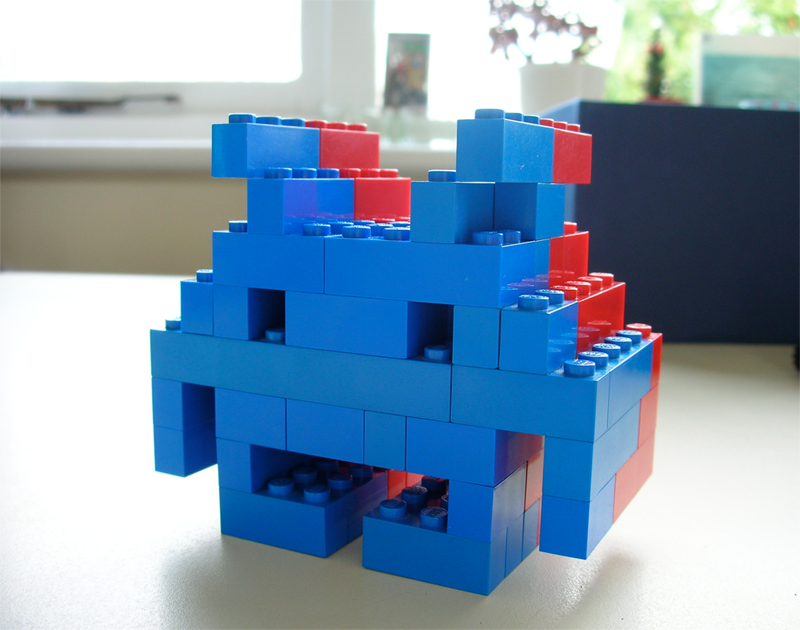Team:UCL London/Week 14
From 2010.igem.org
T minus 5 weeks- Week 14
September 27th-October 3rd
An early meeting with the artists to finalize our logo, mascot, and presentation.
Spoiler: Lego pieces are involved.
In the lab, we prepared the chemicals for the fermentation, and Arif was busy filling in a Material Transfer Form to send to M2P labs in Germany, who agreed to run a fermentation in parallel. Carol went on a treasure hunt in search of a funnel, and weighed chemicals for the fermentation prep. WARNING: "Do not sniff the Ammonia". Seriously.
Today, we started early. In blue lab coats, we prepared four one litre fermenters for autoclave.
We are at the innovation suite, listening to "hide your kids, hide your wife". We are resting after a battle with the autoclave machine, who at first refused to operate, but then after a couple of words with Carol, was convinced that it should work. And it did.
Not a good start to the day, we were now 2 men down. Omar's knee worsened and Ali has injured his head and needs stitching. Arif believes it's some sort of jynx sent from other Universities, his claims will be investigated! before you start wondering, both injuries were football related, so we're thinking of taking up boxing next week :D.
But neverethless, we cracked on as a team by making final changes and modifications to our inspiring wiki page. In terms of lab work, today was the long awaited Fermentation Innoculation date. For the first time in UCL's iGEM history, a fermenter was to be used. And so the countdown to this historic event commenced...12 hours to go. 11..10.. you get the drift.
In terms of the vital fermentation session, we started by preparing the acid/base and pumping it in preparance for the innoculation. We loaded the 4 different strains into individual 1 litre fermenters. We commenced by calibrating the pH meter in the fermenters and this was done by taking seperate readings of the fermenter and the same reading from a seperate pH meter, and the difference was then logged into system, even though the difference was very small. Having done so, we took OD readings of the individual cultures before innoculation. Post innoculation, the first reading were taken and the results were as follows;
Arif championed the fermentation session, "ALL HAIL ARIF", he took charge of ensuring that a plan was laid out for both readings to be taken from 9 pm onwards on an hourly basis and also that there were people to man the all important freshers stall.
Today was UCL's first day of the annual FRESHER'S FAYRE and this year we managed to get a stall where we talked about iGEM! This was a very big success as many first year students came towards our stall curiously asking us more about the competition and synthetic biology. It was a very interesting and rewarding experience for all of us.
Also, Fermentation was still taking place so there were rotations between the fermentation hall and the iGEM stall to ensure there was atleast one person watching the fermenters at all times.
Growth of the cells in each of the four 1 Litre fermentations were very slow, therefore samples were not always taken every hour.
Today was UCL's second day of the annual fresher's fayre where we continued to recieve curious students enquiring about iGEM.
With regards to Fermentation, the cells were starting to grow slightly faster, but nothing dramatic has happened yet. This is going to be a very long day.....
Arif and Carol came into University on a Saturday to continue checking on the fermentation, they thought it was going to be a big dissapointment with no dramatic increase in cell growth, but to their surprise all three fermenters had dramatic cell growth overnight while the cells in the fourth fermenter were still slowly growing.
two OD (Optical Density) measurements were taken every hour, and then averaged to find a precise OD measurement for each of the four fermenters. Also samples were taken, centrifuged, and then frozen to be put to use later.
Finally after a few hours we reached the optimal OD values we wanted to begin experimenting on the three fermenters. Starting on experimenting with Fermenter number 3, we devised a plan. At different time intervals we turned off the oxygen and stopped the stirrer, waiting to see what would happen.
We took OD samples before turning off the oxygen, while the oxygen was turned off, and again when we turned it back on, we also centrifuged these samples and froze them.
We saw something under UV light that really made us feel very happy and accomplished :)
The same experiments were carried out for the other fermenters as well.
Impellers off! All pumps off! We’re ready to disassemble the four fermenters that made our shiny babies. Checklist: Thermometer out . Dissolved Oxygen probe out. Antifoam supply tube out. pH probe. Feed supply tube out. Acid and Base feed tubes out. Pressure tube out.
all connecting tubes clamped,
all filters covered by aluminium foil.
Steven (the guardian of the fermenters) and Arif carried the four fermenters to the Autoclave machines amidst a cloud of horrible horrible smells! But seeing those babies fluoresce was worth it.
But here we are now, at the end of the summer, looking at our cells fluorescing in the absence of oxygen and realising that all the stress, anxiety, hard work, and fun have finally paid off. iGEM has made summer of 2010 one of the most memorable summers for all of us. We’ll be looking forward to meeting you all in Boston.
1 2 3 4 5 6 7 8 9 10 11 12 13 14


 "
"









 Twitter
Twitter Facebook
Facebook UCL
UCL Flickr
Flickr YouTube
YouTube